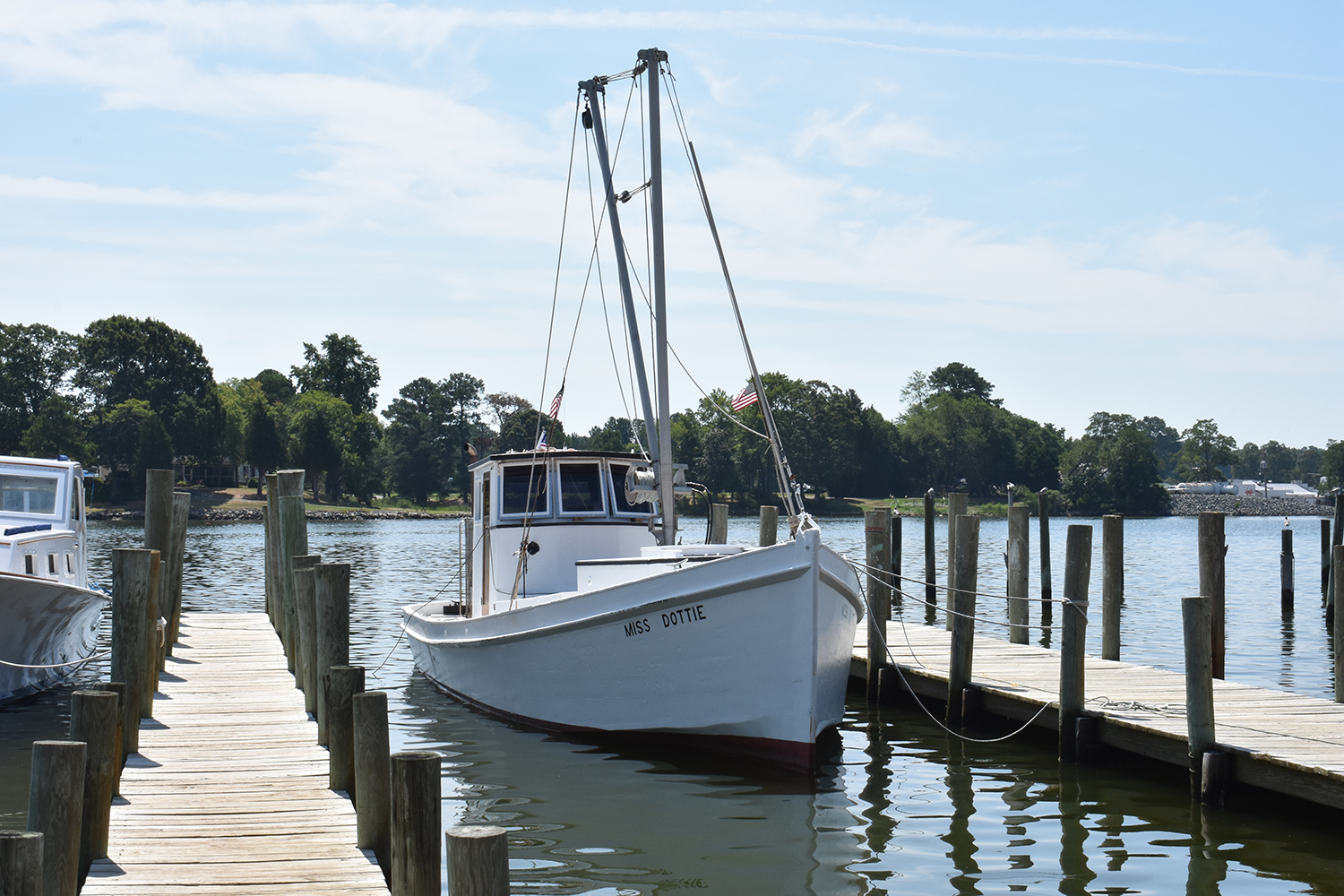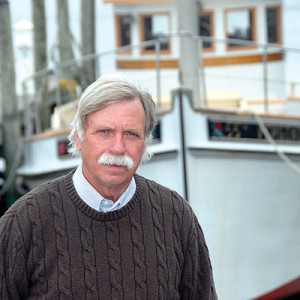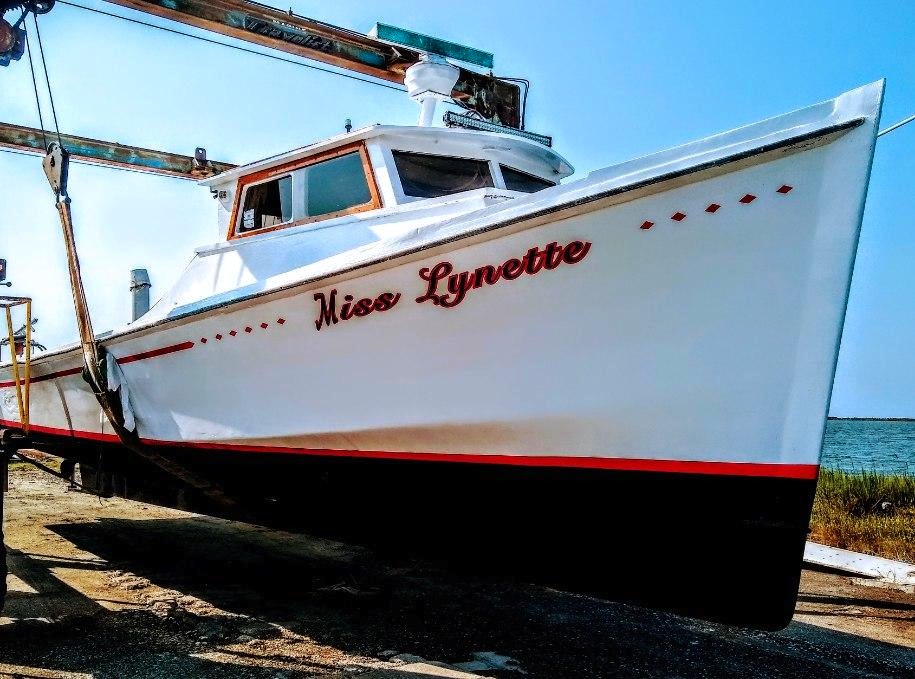Smith Island Drydock at Rhodes Point, Md., is a boatyard that’s off the beaten trail but located in the very heart of the Chesapeake Bay commercial fishing region.
Smith Island is 10 miles from Crisfield, out in the bay with but a ferry and boats to connect the two. The men of Smith Island traditionally make their living commercial fishing in the bay and Tangier Sound.
Chris Marshall’s boatyard at Rhodes Point is in a prime location for the business of repairing and maintaining workboats. The yard stays busy!
The most recent repair delivery was the wooden 42' x 12.5' deadrise workboat named the Miss Lynette, built in 1988 by the late Bobby Crockett of Tangier Island.
Miss Lynette is owned by Smith Island waterman Olden Bradshaw, who uses his boat to crab in the spring and summer and to dredge oysters in fall and winter months.
The boat was hauled for a paint job and routine maintenance in August but ended up on the hard for two weeks as six bottom planks had to be replaced with 2-inch-thick fir boards.
Crockett built deadrise workboats on Tangier Island in 1970s, ’80s and ’90s. His boats are noted for having pretty lines. In a 1989 NF interview Crockett said he had been crabbing in the summer and working on an oyster dredge boat in the winter when he decided he’d rather try his hand at boatbuilding.
Crockett went to Deltaville, Va., to learn the trade and worked for a week with the renowned deadrise boatbuilder, the late Grover Lee Owens. “He taught me as much in a week as it would have taken me a year to learn on my own,” said Crockett.
Owens started out as a cabinetmaker and switched careers to building boats. He built some of the prettiest wooden deadrise boats on Chesapeake Bay, and Crockett’s boats are similar.
The yard also recently completed a fuel tank repair job on a fiberglass Parker 25. “We drained the fuel tank and removed it,” says Marshall. “We flushed the tank with soapy water, sanded the stainless steel 60-gallon tank to bright metal, and applied two layers of fiberglass matt and gel-coated to the outside of the tank.”
The deck was cut open to remove and repair the tank. “After the tank was repaired and installed, we repaired the deck and gave it a fresh coat of gel-coat,” says Marshall. The Parker 25 is owned by Jamie Taylor of Frenchtown, Md., who uses the boat in his pile-driving business.
Moving across the bay, Stan O’Bier had the 44' x 12' x 3.6' wooden deck boat Miss Dottie at Reedville Marine Railway in Reedville, Va., for annual maintenance and painting in August for C.W. O’Bier & Sons, T/A Pride of Virginia Seafood of Callao.
The 64-year-old Miss Dottie was built in 1956 by the late Charles Herbert Rice on Cockrell Creek just a short distance from the Reedville railway and the fish house where the boat is moored today.

Pride of Virginia Seafood sells crab, lobster and eel pot bait to commercial fishermen and chum to recreational fishermen. Miss Dottie is used to catch baitfish from pound nets in Chesapeake Bay. “Since she was built she has worked in the bay’s pound net fishery,” says O’Bier. “She started out as an open trap boat and was later decked over to what she is today.”
Ed Rice of Reedville, whose father built the boat, says Miss Dottie was first built for E. Barlette “Spider” Haynie to fish pound nets. “Make sure to use the nickname Spider because no one around here knew him by anything else,” says Rice. Miss Dottie was named for Spider’s daughter, Dorothy Haynie.
Rice says Haynie sold the boat to Reedville Oil and Guano, which is known today as Omega Protein. The firm rebuilt the boat into a deck boat with the pilothouse aft at its boatbuilding yard at Mundy Point.
“Reedville Oil used her to work pound nets,” says Rice. “I do not think she has ever worked in another fishery.”
O’Bier says the boat has been in his family for many years. His great-uncle owned it for a while, and O’Bier bought the boat from his father-in-law.
“It has trickled down through the generations to me,” he says.
George Butler, owner of Reedville Marine Railway, says Miss Dottie is an example of what he used to see all the time at the railway — “annual arrival of the same boats coming back year after year.”
“The Miss Dottie has been coming here for years,” says Butler. “When we see a wooden boat up on the rails every year we can locate small problems before they become major problems.
“She has not come here every year, but she has been coming here fairly regularly since she was built in 1956. She has lived most of her life right here on Cockrell Creek,” says Butler.







